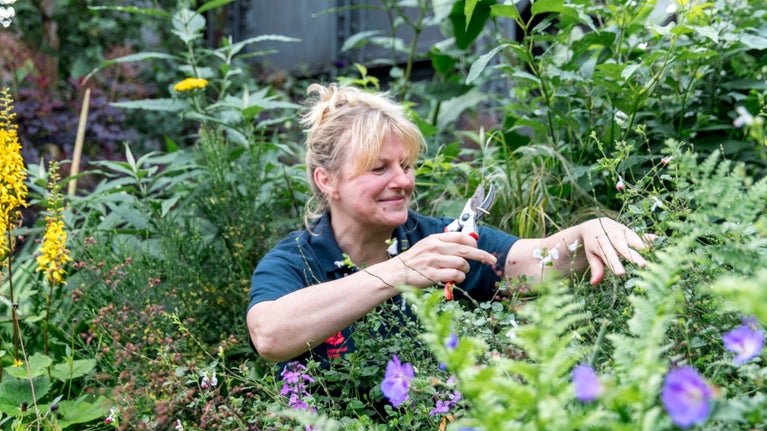
Get gardening
Our gardeners are on hand with ideas for your garden, plot or window box. From planting veg to tackling weeds, they’ve got all the important topics covered.

At Mottisfont in Hampshire, the Rose Garden is a summer highlight. Jonny Bass, previous Head Gardener there, explains how to create a beautiful rose arch in your own garden.
Find an arch that’s right for the space – you can use metal or wood. We use both at Mottisfont.
Choose between ramblers and climbers for your roses. We use ramblers – they flower for only about four weeks but grow quickly and create a mass of flowers. Climbers repeat-flower from early May throughout the summer. They grow more slowly but they’re easier to manage. Once you’ve chosen, buy two of the same rose. The variety Rosa gallica has wonderful blooms with heavenly scents.

Secure your arch in the ground and dig a planting hole at either side. The holes should be at least twice the size of the pot the roses are in. Scatter some compost in the hole (we also add mycorrhizal fungi) and over the roots, and plant your roses firmly.
You’ll soon get long stems appearing. Spread them out and secure them to the arch using garden twine. It’s important not to remove long shoots, as these will become the flowering wood.
Cut the bottom off a plastic drinking bottle and remove the cap. Insert the bottle into the ground upside-down, near the roots of your rose. Keep it topped up with water to stop the rose drying out.

Once your rose has finished flowering, prune back flowering shoots to just above where they join the main stem. Feed before spring with a layer of mulch around the roots to nourish the plant.
If your garden isn’t big enough for a rose arch, train a rose up a single fence post. You’ll end up with around 2m of roses in a small patch.

Our gardeners are on hand with ideas for your garden, plot or window box. From planting veg to tackling weeds, they’ve got all the important topics covered.
The National Collection of Pre-1900 Shrub Roses reaches its peak flowering season in early summer for a spectacular annual display.

Did you know that the ancient Greeks and Romans loved to grow roses? Discover the roots and symbolism of these much-loved flowers through the objects and art in our care.

Keep your garden or outdoor space looking its best through the warmest and driest season of the year with these summer gardening tips.

We've committed to going peat free as an organisation, and all the plants we grow, buy and sell are potted in peat-free compost. Hear from our team of gardening experts and discover top tips for peat-free gardening in your green space.
